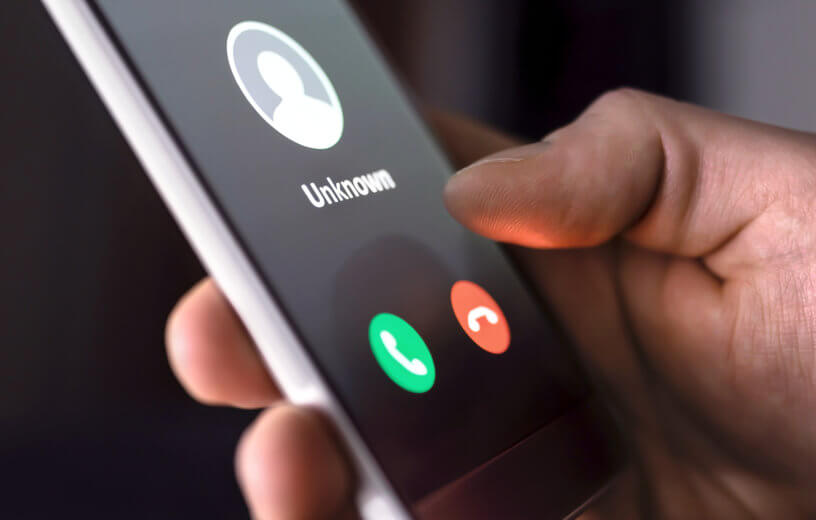Researchers say that answering robocalls or speaking with telemarketers won’t make you likely to receive even more.
RALEIGH, N.C. — They’re annoying, relentless, and some are trying to steal your private information. For anyone with a phone, robocalls are the bane of their existence. While agencies like the Federal Trade Commission say people are getting fewer calls, some believe the problem is getting worse. So which is true? A new study by North Carolina State University finds the answer is probably neither. Researchers say these infuriating phone calls are continuing to bother consumers at the same rate they always have.
“One of our research questions was whether robocalls were getting worse, or becoming more frequent,” study author Sathvik Prasad says in a media release. “We found that the answer is no – the number of robocalls was virtually identical from month to month.”
The NC State team carried out an 11-month study, from early 2019 to early 2020, in an attempt to track down the thousands of calls plaguing phone lines. Teaming with communications company Bandwidth Inc., researchers say they were able to monitor over 66,000 lines for robocalls.
Nearly 1.5 million reasons to hang up
The study defines a robocall as any automated or partially automated call that plays a pre-recorded message. During those 11 months, researchers report a staggering 1,481,201 unsolicited calls were received by their phone lines. As Prasad explains, this number is remarkably high but is not increasing or decreasing.
The volume of robocalls is also giving the team new insight into who’s making these calls and how to possibly stop them. Researchers say freeing up your telephone is critical during the COVID-19 pandemic. They say healthcare workers are commonly calling from numbers people don’t know.
“Robocalls have made people less likely to answer phone calls from unknown numbers – and that makes it more difficult for contact tracers to do their jobs,” Prasad explains.
Tracking down the culprits
Study authors say the results reveal one surprising thing about robocalls. Although many start their robot recording right when you pick up, the majority say nothing at all.
“About 62% of the unsolicited calls our numbers received included practically no audio at all – which was surprisingly high,” Prasad reports. “And only a little more than half of the remaining 38% contained enough audio data to allow for us to conduct a robust assessment.”
Co-author Brad Reaves adds even short recordings give them enough information to discover that many of these call are identical. That lets researchers know hundreds, if not thousands, of these calls are coming from the same companies. Tracking them to their source may one day give governments the ability to end this tactic.
“This is a big deal because tracing a call back through communication service providers is a manual process that takes time,” Reaves explains. “We started with answering just over 146,000 calls – it would be impossible to trace them all back. But first we eliminated all the silent calls, that narrows it down considerably. Then we were able to cluster calls together into 2,687 specific campaigns. Most of the campaigns only made a few calls, but a handful of those campaigns made thousands of calls. So, effectively you can narrow down a big chunk of robocalls to only a few campaigns. And you can track those down.”
Which robocall myths are real?
The study, presented at the USENIX Security Symposium, also looks at many of the myths tied to robocalls. While some believe answering robocalls will make you a target for many more, NC State says this is not true.
“For years, messaging from government agencies and trusted nonprofit organizations has focused on reducing robocalls by not answering calls from unknown numbers. And while we encourage people to avoid engaging with robocalls, we found that answering a robocall has no effect on the number of robocalls you receive,” Reaves says.
One incredible story the study does confirm are the tales of people receiving hundreds of back-to-back unsolicited calls. Researchers find there actually are unlucky people who get swamped by nonstop calls, leaving their phone unusable for several days. The study also explains how this rare event happens.
“We dubbed these high call-volume events ‘storms,’ and found that they happen when a robocaller identifies itself using a fake phone number – and that phone number actually belongs to someone else. If the robocaller makes hundreds of thousands of calls using the fake number, hundreds of people see it on their ‘missed calls’ list and call it back,” Reaves explains.
“The high volume of calls essentially makes it impossible for the person who actually has the relevant phone number to use their phone,” he continues. “However, because robocallers switch numbers fairly often, the inconvenience usually only lasts for a day or two.”

This research must be faulty. In the past month, I have started receiving six to seven calls daily. It used to be six or seven weekly.